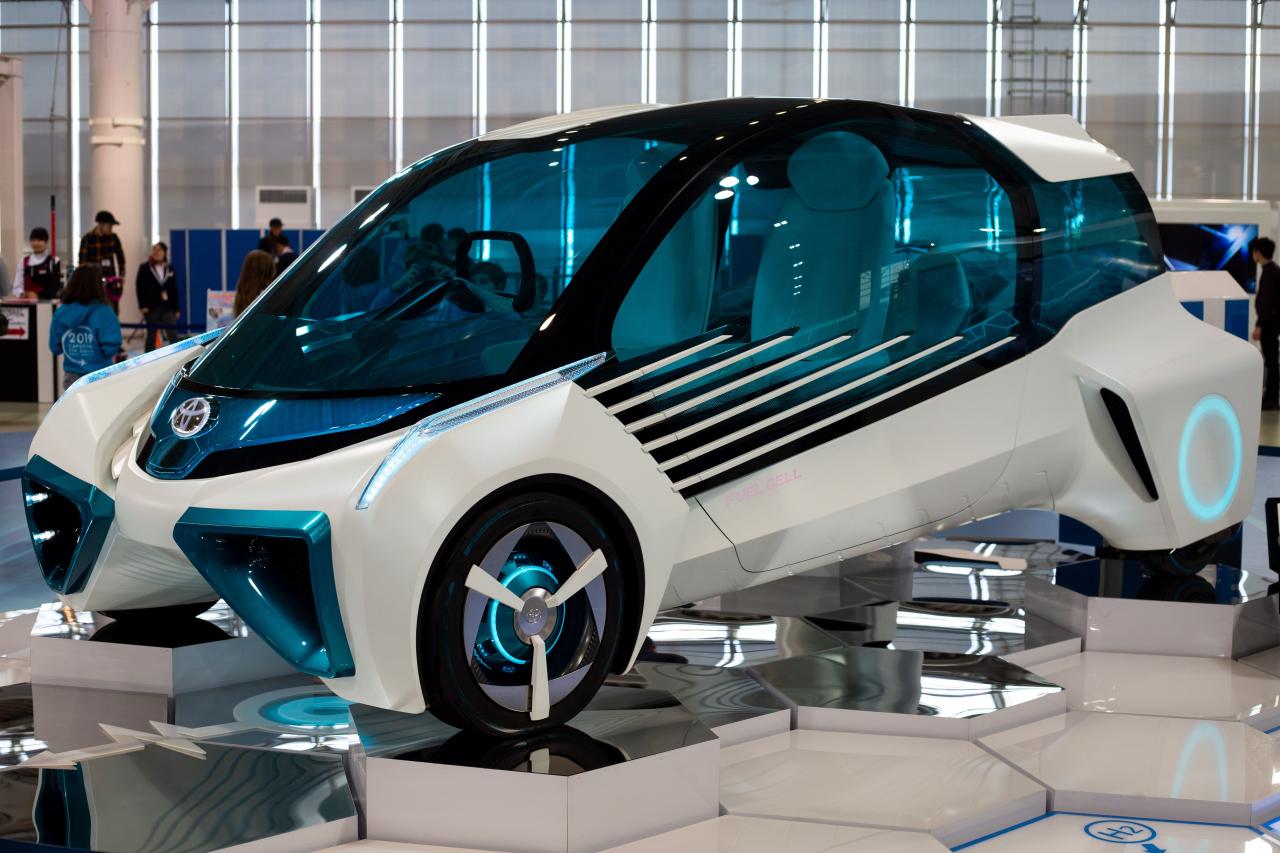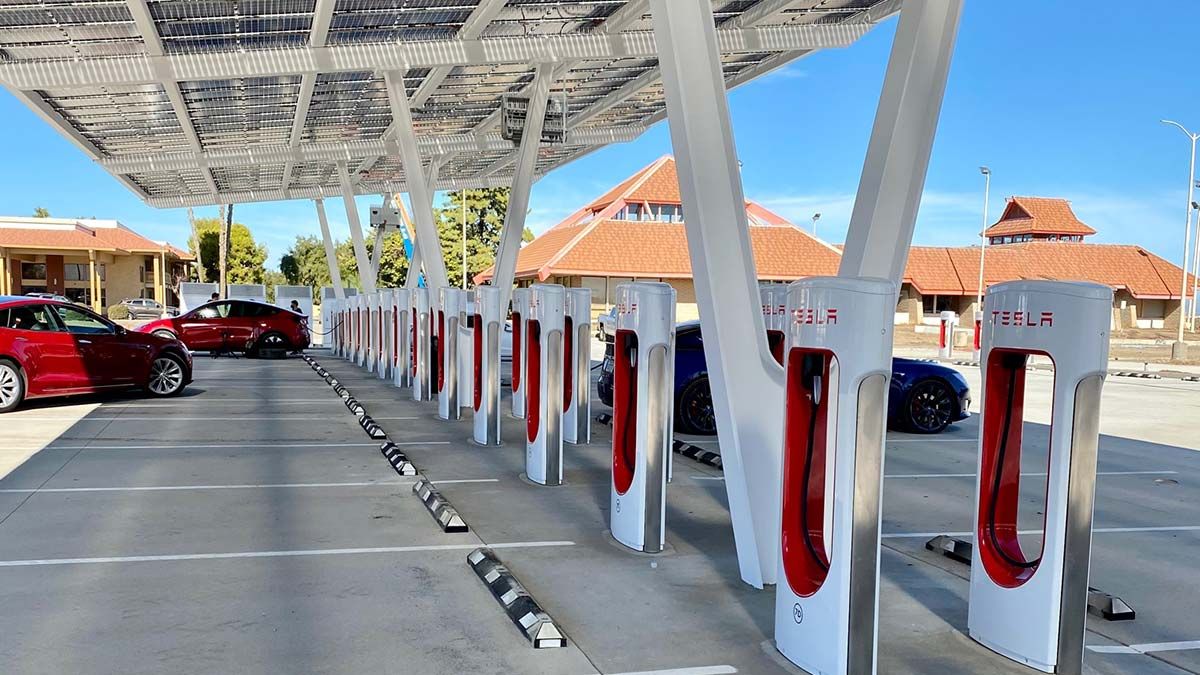The Resurgence of a Clean Energy Solution
For decades, hydrogen fuel has been championed as the ultimate clean energy carrier, promising a future of zero-emission transportation and a decarbonized economy. Despite its immense potential, it has often remained on the sidelines, overshadowed by the rapid rise of battery electric vehicles (BEVs) and the complexities of establishing a hydrogen infrastructure. However, as the global imperative for deep decarbonization intensifies and the limitations of a purely electric grid become more apparent, hydrogen is staging a significant comeback. This isn’t merely a fleeting trend; it’s a strategic resurgence driven by technological advancements, increasing investment, and a renewed understanding of hydrogen’s critical role in a diverse, sustainable energy landscape.
A Storied Past: Hydrogen’s Unfulfilled Promises
The concept of using hydrogen as fuel dates back to the early 19th century, but serious consideration for automotive applications began in the latter half of the 20th century. Prototypes of hydrogen-powered internal combustion engines and early fuel cell vehicles emerged in the 1970s and 80s. The turn of the millennium saw a surge of optimism, with major automakers like Daimler, BMW, Honda, and Toyota investing heavily in fuel cell electric vehicles (FCEVs). These early initiatives often faced formidable hurdles:
A. High Costs: Fuel cells were incredibly expensive to manufacture, often requiring costly platinum catalysts. Hydrogen storage solutions were also complex and costly. B. Infrastructure Deficit: A lack of widespread hydrogen refueling stations made FCEVs impractical for most consumers. The “chicken-and-egg” problem – no cars without stations, no stations without cars – proved difficult to overcome. C. Production Challenges: The vast majority of hydrogen produced at the time (and still largely today) relied on steam methane reforming (SMR), a process that generated significant carbon emissions, negating hydrogen’s “clean” image. This was “grey hydrogen,” far from the ideal “green hydrogen.” D. Public Perception and Safety Concerns: Past incidents involving hydrogen (like the Hindenburg disaster, though not directly related to fuel cell technology) fostered public apprehension, despite modern safety protocols making hydrogen fuel cells as safe, if not safer, than gasoline tanks in a crash. E. Competition from BEVs: As battery technology rapidly improved and charging infrastructure expanded, BEVs gained significant traction, especially for passenger cars, diverting investment and attention away from hydrogen.
These challenges led to a period where hydrogen was often deemed too expensive, too difficult to deploy, and perhaps an impractical solution for mass-market transportation. However, the energy landscape of the 2020s presents a very different picture, creating fertile ground for hydrogen’s current renaissance.
The Drivers of Revival: Why Hydrogen Now?
The renewed interest in hydrogen is multifaceted, stemming from a confluence of global energy demands, technological breakthroughs, and policy shifts.
A. Deep Decarbonization Imperative: Simply electrifying everything isn’t enough to meet aggressive climate goals. Many heavy industries (steel, cement, chemicals), long-haul transportation (trucking, shipping, aviation), and grid-scale energy storage are difficult or impossible to electrify directly with batteries. These “hard-to-abate” sectors require a high-energy-density, storable, and transportable fuel that can be produced cleanly. Hydrogen fits this bill perfectly. It acts as a crucial complement, not a competitor, to electrification.
B. Advancements in Green Hydrogen Production: The biggest game-changer is the rapidly improving economics and efficiency of green hydrogen production. i. Electrolysis Efficiency: Electrolyzers, which use electricity to split water into hydrogen and oxygen, are becoming more efficient and less costly. As renewable energy (solar, wind) prices plummet, it becomes economically viable to power these electrolyzers with clean electricity, producing truly zero-carbon hydrogen. ii. Renewable Energy Surplus: In many regions, there are times when renewable energy generation exceeds grid demand. This surplus electricity, which would otherwise be curtailed, can be profitably used to produce green hydrogen, effectively storing intermittent renewable energy.
C. Technological Leaps in Fuel Cells: Fuel cell technology itself has matured significantly. i. Cost Reduction: Manufacturers have made strides in reducing the amount of platinum required and improving manufacturing processes, driving down the overall cost of fuel cell stacks. ii. Durability and Performance: Modern fuel cells offer greater durability, longer lifespans, and improved performance in various operating conditions, making them more attractive for commercial applications. iii. Efficiency: Continued research has led to more efficient energy conversion from hydrogen to electricity.
D. Developing Infrastructure Ecosystems: While still nascent, there’s a concerted global effort to build out hydrogen infrastructure. Governments and private consortia are investing in: i. Hydrogen Production Hubs: Large-scale green hydrogen production facilities near renewable energy sources. ii. Pipelines and Distribution Networks: Developing dedicated hydrogen pipelines or repurposing natural gas pipelines for efficient transport. iii. Refueling Stations: Gradually expanding the network of hydrogen refueling stations, especially for commercial fleets (trucks, buses) that benefit most from rapid refueling.
E. Strategic Importance and Energy Security: Many nations view hydrogen as a key component of future energy security, reducing reliance on fossil fuel imports and enabling energy independence through diversified domestic production. It also offers a way to store and transport energy from renewable-rich regions to energy-demand centers.
Understanding the Colors of Hydrogen: A Spectrum of Sustainability
The “color” of hydrogen refers to its production method, and understanding this distinction is crucial to grasping hydrogen’s environmental impact. The shift towards “green” is central to its comeback.
A. Grey Hydrogen: i. Production Method: Produced from natural gas (methane) using steam methane reforming (SMR). Methane is reacted with high-temperature steam, producing hydrogen and a significant amount of carbon dioxide (CO2) as a byproduct. ii. Environmental Impact: Highly carbon-intensive. For every kilogram of hydrogen produced, approximately 9-10 kilograms of CO2 are released into the atmosphere. This is currently the most common and cheapest form of hydrogen.
B. Blue Hydrogen: i. Production Method: Also produced from natural gas via SMR, but with the crucial addition of Carbon Capture, Utilization, and Storage (CCUS) technology. The CO2 generated during production is captured and either utilized (e.g., in industrial processes) or permanently stored underground. ii. Environmental Impact: Significantly lower carbon footprint than grey hydrogen, but not zero. The effectiveness depends on the efficiency of the CCUS technology. It’s considered a transitional solution on the path to green hydrogen.
C. Green Hydrogen: i. Production Method: Produced through electrolysis, where electricity is used to split water (H2O) into hydrogen (H2) and oxygen (O2). The key defining factor is that the electricity used must come from renewable energy sources such as solar, wind, or hydropower. ii. Environmental Impact: Truly zero-carbon at the point of production. This is the ultimate goal for sustainable hydrogen, representing its full potential as a clean energy carrier. It’s the most expensive to produce currently but costs are falling rapidly.
D. Other Colors: While less common or still in nascent stages, other “colors” exist: i. Pink Hydrogen: Produced via electrolysis using nuclear power as the energy source. ii. Yellow Hydrogen: Produced via electrolysis using mixed grid electricity, with varying carbon intensity depending on the grid’s energy mix. iii. Turquoise Hydrogen: Produced from methane pyrolysis, splitting methane into hydrogen and solid carbon (instead of CO2), a process still largely in research and development.
The current emphasis in the “hydrogen comeback” narrative is almost entirely on the rapid scaling and cost reduction of green hydrogen, as this is the pathway to a truly sustainable hydrogen economy.
Applications: Where Hydrogen Shines Brightest
While BEVs are highly suitable for light-duty passenger vehicles with predictable charging patterns, hydrogen excels in specific use cases where batteries face limitations.
A. Heavy-Duty Transportation: i. Long-Haul Trucking: Fuel cell trucks offer a compelling alternative to battery-electric trucks for long distances and heavy loads. They can refuel in minutes (similar to diesel trucks) and offer longer ranges without the massive weight penalty of large battery packs, which can reduce payload capacity. This is a primary focus for many hydrogen initiatives. ii. Buses: Fuel cell buses are already operating in many cities worldwide. They offer zero tailpipe emissions, quiet operation, and the ability to operate continuously for long shifts with quick refueling, making them ideal for urban public transport. iii. Trains and Maritime Vessels: Hydrogen fuel cells are being developed for locomotives (e.g., Alstom Coradia iLint, the world’s first hydrogen-powered passenger train) and larger ships, offering a clean alternative for routes where overhead lines or battery charging are impractical. iv. Aviation: For future regional flights or even larger aircraft, hydrogen (either as a direct combustion fuel or in fuel cells for electric propulsion) offers a high energy density solution that batteries simply cannot match for long-range air travel.
B. Industrial Decarbonization: i. Steel Production: “Green steel” is a major application. Hydrogen can replace coal or natural gas as a reducing agent in steel manufacturing, drastically cutting emissions from one of the world’s most carbon-intensive industries. ii. Chemical Production: Hydrogen is a crucial feedstock for many chemical processes, including ammonia production (for fertilizers). Producing this hydrogen with renewable electricity is a direct path to decarbonizing these sectors. iii. High-Heat Processes: Industries requiring extremely high temperatures (e.g., cement, glass) can potentially use hydrogen as a clean fuel to replace fossil fuels.
C. Grid-Scale Energy Storage: i. Long-Duration Storage: Intermittent renewables like solar and wind produce electricity when the sun shines or wind blows, not necessarily when demand is highest. Hydrogen provides a way to convert surplus renewable electricity into storable energy, which can then be converted back to electricity via fuel cells or turbines when needed, effectively acting as a massive battery for the grid over days, weeks, or even months. This is crucial for grid stability and reliability. ii. Power-to-X (P2X): The concept of converting renewable electricity into hydrogen, and then further into other synthetic fuels (e.g., ammonia, methanol, synthetic natural gas) or chemicals (“X”), offers pathways to decarbonize sectors beyond direct electrification, enabling the transport and use of renewable energy where direct electricity is not feasible.
D. Backup Power and Combined Heat and Power (CHP): Fuel cells can provide reliable, clean backup power for critical infrastructure (hospitals, data centers) or act as combined heat and power units for buildings, offering high efficiency by simultaneously producing electricity and useful heat.
E. Niche Passenger Vehicle Market: While not expected to dominate the passenger car market, FCEVs may still find a niche for specific consumers who prioritize extremely fast refueling and long range over the convenience of home charging, especially in areas with developing hydrogen infrastructure. Models like the Toyota Mirai and Hyundai Nexo continue to advance this segment.
The Road Ahead: Challenges and Opportunities
Despite the strong momentum, the “hydrogen comeback” faces significant challenges that need to be addressed for its widespread success.
A. Cost Competitiveness: Green hydrogen is currently more expensive to produce than grey hydrogen. Driving down the cost of electrolyzers, increasing renewable energy availability, and optimizing production processes are crucial for it to compete economically with fossil fuels. Government subsidies, carbon pricing mechanisms, and economies of scale will play a vital role.
B. Infrastructure Build-out: Building a comprehensive hydrogen infrastructure – from production to storage, transportation (pipelines, liquefaction, compression), and dispensing stations – requires massive investment and coordinated planning across industries and governments. This is a multi-decade undertaking.
C. Energy Efficiency (Round-Trip Efficiency): Converting electricity to hydrogen (electrolysis) and then back to electricity (fuel cell) involves energy losses. While improving, the round-trip efficiency of hydrogen storage and utilization is generally lower than direct battery storage. This makes hydrogen most suitable for applications where its specific advantages (energy density, long-duration storage, rapid refueling) outweigh efficiency considerations.
D. Safety Perception: Overcoming lingering public misconceptions about hydrogen safety is critical. Continued education, rigorous safety standards, and transparent reporting are necessary to build trust and ensure safe handling and deployment of hydrogen technologies. Modern hydrogen systems are designed with multiple safety redundancies.
E. Standardization and Regulation: Developing common industry standards for hydrogen quality, fueling protocols, and safety regulations across different countries is essential for interoperability and global market growth. This includes harmonizing vehicle and infrastructure specifications.
F. Supply Chain Development: Scaling up the hydrogen economy will require robust and reliable supply chains for electrolyzers, fuel cells, storage tanks, and other components, necessitating significant manufacturing expansion.
Despite these hurdles, the momentum for hydrogen is undeniable. Global investment in hydrogen projects is surging, with governments from the European Union to Japan, South Korea, and Australia formulating national hydrogen strategies. Companies are forming consortia to develop large-scale green hydrogen hubs, and major industrial players are committing to hydrogen adoption for decarbonization.
The “Hydrogen Fuel’s Comeback” isn’t about replacing every battery-electric vehicle. Instead, it’s about hydrogen taking its rightful place as an indispensable pillar of a diverse, resilient, and truly net-zero energy future. It’s a comeback driven by necessity, innovation, and a deeper understanding of how this versatile element can unlock solutions for the planet’s most challenging decarbonization puzzles. The hydrogen economy is no longer a distant dream; it is rapidly becoming an essential component of our sustainable reality.














